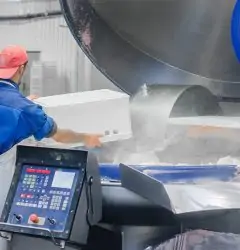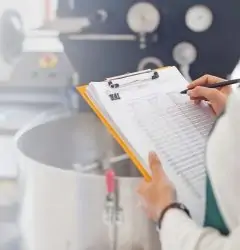22 Jul

The Food and Drug Administration monitors the Hazard Analysis Critical Control Point program in the US. The program mainly focuses on maintaining standards of safety for the food industry. Seafood HACCP is more about safety assurance than it is about quality assurance.
History of HACCP
In the US, the first-ever publication, about how Hazard Analysis Critical Control Point can be used in the seafood industry, was presented in 1977. Apart from low canned food with low acids, very few steps were taken, for the application of HACCP to the seafood industry, before 1985.
During these years, the seafood HACCP plan remained an effective way in terms of monitoring the safety of shellfish and fish. Whereas in 1985, the FAO Fish Utilization and Marketing Service started using HACCP as a part of its training programs as seafood HACCP training. In addition, the United States National Marine Fisheries Service (NMFS) introduced a program based on HACCP for ensuring seafood safety.
Benefits of HACCP
Using HACCP procedures enables businesses to benefit from the cost-effective system for controlling food safety, from basic ingredients to production, stocking, and distributing to sales.
The seafood HACCP guide involves procedures that use a preventive approach to improve the management of food safety as well as other systems for quality management.
Some of the main benefits of HACCP based procedures are:
- Helps your business to save more in the long run
- Ensures that your products are safe for consumption
- Increase food safety standards
- Ensures your business complies with state regulations and laws
- Helps you to organize your processes for producing safe food
- Enhances the efficiency and productivity of your staff
- Due diligence defense in court.
HACCP And Seafood Safety
Hazard Analysis Critical Control point (HACCP) refers to a preventative system of controlling hazards rather than dealing with a single point of inspection or reaction for minimizing the risk of hazard. Food processors depend on HACCP for identifying potential hazards, establishing and monitoring controls when met with harmful chemicals, microorganisms, or any type of physical contaminants in seafood.
The concept of using the HACCP regulations for the food industry originated back in the 1960s, i.e., with the space program of the United States. For providing food that meets the requirements of safety standards during space flights, it was decided that a preventative system is the best choice in terms of reducing the risk of food safety hazards.
CDC seafood safety
Cleanliness – Washing hands and surfaces
- Germs causing food poisoning might be everywhere, even in your kitchen.
- Before and after preparing the food, you must wash your hands for twenty minutes with water and soap.
- Clean your utensils, countertops, and cutting boards with hot and soapy water.
- Always wash vegetables and fruits before using them.
Separation – Never cross-contaminate
- Eggs, seafood, poultry, and raw meat can become the reason of germs spread. Keep them separate.
- Always use separate plates and cutting boards for seafood, poultry, and raw meat.
- When you are buying groceries, make sure you put seafood, poultry, and raw meat separate from each other.
- When placed in the fridge, eggs, seafood, raw meat, and poultry must be kept separately.
Cooking – Pay attention to the temperature
It is better to use a food thermometer to ensure that your food is cooked at an internal temperature to kill germs that can make you sick. When the temperature is high, your food is safely cooked.
- 145°F: veal, whole cuts of beef, lamb, and pork
- 160°F: for beef and pork
- 165°F: poultry (ground chicken and turkey)
- 165°F: leftovers and casseroles
- 145°F: for fresh ham (raw)
- 145°F: for finfish or you can cook until the flesh turns opaque
Chill – Refrigerate
- Your refrigerator must be at 40°F or below.
- Always check for expired food.
- Refrigerate perishable food must within one to two hours.
Principles Of HACCP Program
Hazard Identification – Principle 1
List all steps involved in the process and highlight where hazards are more likely to occur. The team responsible for dealing with the FDA seafood HACCP program focuses on hazards that can be minimized or eliminated by using an effective HACCP plan. However, it is necessary to state justification when a hazard is included or excluded also measures to control these hazards.
Identification of Critical Control Points – Principle 2
A critical control point or CCP is a procedure or a step, through which food safety hazards can be prevented, eliminated, reduces, or controlled to an acceptable level. CCP decision tree will be used by HACCP tea, to highlight critical control points involved in the process. A single critical control point might deal with several food safety hazards, or sometimes more than one CCP is required to deal with a single safety hazard.
Establishing Critical limits – Principle 3
A critical limit refers to the minimum or maximum value to which a biological, physical, or chemical parameter must be controlled using a CCP to eliminate, prevent, or reduce food safety hazards to an acceptable level. However, a critical limit is a measure such as water activity, temperature, time, weight, etc.
Monitoring Critical Control Point – Principle 4
The team responsible for dealing with HACCP will describe procedures for monitoring the critical limit measurement at each critical control point. These procedures must explain how and when the measurements will be taken and who will be responsible for it. The frequency of measurement monitoring must also be highlighted.
Establishing Corrective Action – Principle 5
Corrective actions are procedures to follow if deviation appears in a critical limit. The HACCP team will explain the steps to deal with these deviations and prevent harmful food from entering the food chain. It involves the identification of a problem, steps to deal with it and make sure that it will never occur again.
Verification – Principle 6
It involves activities that validate the seafood HACCP plan and shows whether the system is working as it was originally supposed to. Instead of end-product testing, the manufacturers must rely upon their HACCP plan. Verification includes CPP monitoring reviews, HACCP plan’s proper and complete implementation, and corrective action records.
Record-Keeping – Principle 7
Recording information helps to ensure that food products are produced according to food safety standards. Record keeping refers to collect all information about the HACCP plan, product descriptions, hazard analysis, flow diagrams, monitoring system, critical limits, etc.
Benefits of using CMMS For HACCP Compliance
In support of HACCP compliance, efficient CMMS like EcoDocs offer effortless and error-free documentation. It helps to store all sorts of information from spare part catalogs to storeroom values. Moreover, it allows technicians to remain updates with inspections and audits and real-time records of data with zero errors.
EcoDocs can:
- Highlight acceptable operation boundaries
- Track work history
- Generate automated reports
- Offer better customization
- Keep all your record in one place
- Help to perform inspection and audits
- Offer quick access to compliance documents and instruction manuals.




Ecodocs